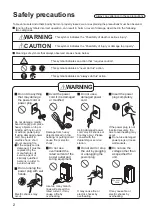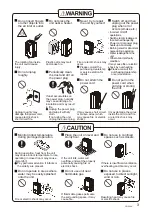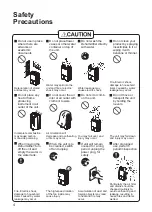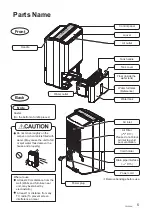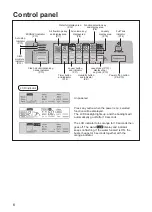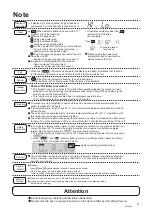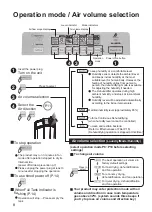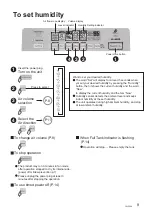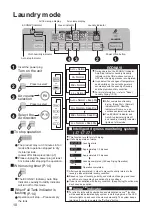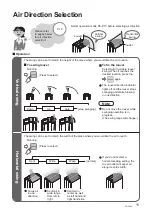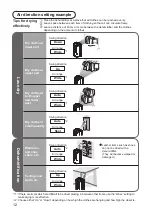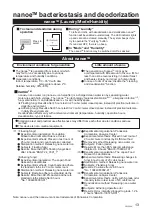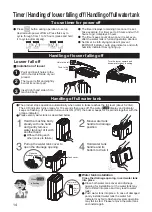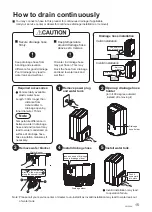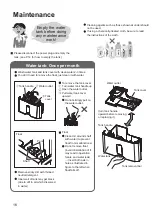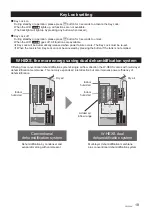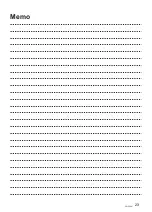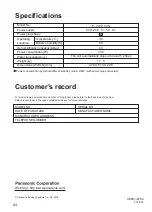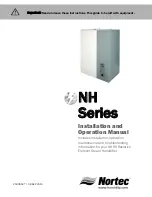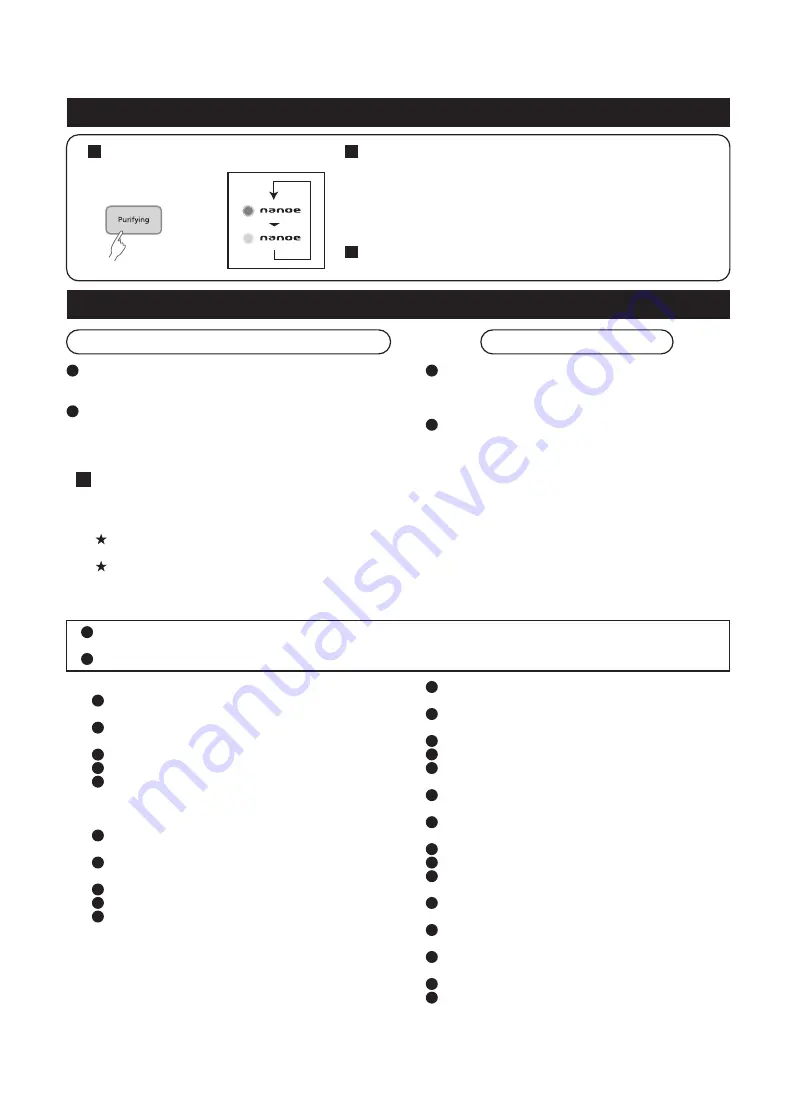
13
YWP33N
nanoe
TM
bacteriostasis and deodorization
The nanoe
TM
is generated from indoor air which
may fail to run successfully due to various
temperature and humidity conditions.
Generation conditions
Indoor temperature: 5°C~35°C with dew
temperature above 2°C.
Relative humidity: 30%~85%
Environment conditions for generation
Little amount of ozone
Press to
select
nanoe
TM
(Laundry/Mode/Humidity)
To clean and deodorize during
operation
During "Laundry"
To refresh cloths, with deodorization and sterilization nanoe
TM
function will be enabled automatically, The LED indicator lights
up and cannot be cleared manually. The system beeps if you
try to operate the "Purifying" button.
If sound set OFF, there is no beep.
In "Mode" and "Humidity"
The nanoe
TM
function may be switched on/off as desired.
About nanoe
TM
The generation of nanoe
TM
ion may be
accompanied with little amount of ozone. It's far
less than ozone level existing in natural forest
and bears virtually no impact on human body.
In case of odor of ozone, disable the "cleaning
and deodorization" function.
nanoe
TM
nanoe
TM
nano water ion (nanoe
TM
ion hereafter) is a charged clean water ion by separating water
molecules with high voltage. The nanoe
TM
ion technology features sterilization
★※
1
, allergens inhibition
※
2
,
fungi elimination
※
3
and deodorization
※
4
for skin healthy space.
Floating fungi: Results after 4 hours test in 25 cubic meter closed space instead of practical outcome in
daily life environment.
Adhering fungi: Results after 8 hours test in 23 cubic meter closed space instead of practical outcome
in daily life environment.
Deodorization effects vary with ambient environment (temperature, humidity), operation hours,
deodorization, type of fabrics.
Standalone test and practical use effectiveness may differ from each other due to conditions and use
method.
This device is not a medical equipment.
※
1
〈
Floating fungi
〉
Experimental organization: Foundation
Kitasato Environmental Science Center
Experimental methods: Placed in test room of
25 cubic meter and count bacteria collected
Sterilization method: Releasing nano water ion
Subjects: Floating fungi
Results: More than 99% floating fungi killed
after 4 hours "BSHF 24_0301_1"
〈
Adhering fungi
〉
Experimental organization: The Japan Food
Research Laboratories
Experimental methods: Count bacteria adhere
to standard cloths in 23 cubic meter room
Sterilization method: Releasing nano water ion
Subjects: Bacteria adhere to standard cloths
Results: More than 99.9% bacteria adhere to
standard cloths killed after 8 hours
"No. 13044083003-01"
※
2 Experimental organization: Panasonic
Corporation Analysis Center
Experimental methods: Placed in test room of
23 cubic meter and test by ELISA method
Removal method: Releasing nano water ion
Subjects: Pollen (cedar)
Results: More than 88% allergic substance
inhibited in 8 hours "BAA33-130402-F01"
※
3 Experimental organization: The Japan Food
Research Laboratories
Experimental methods: Measuring changes in
fungi in test room of 23 cubic meter
Sterilization method: Releasing nano water ion
Subjects: Planktonic fungi
Results: Positive effects in 8 hours
"No. 13044083002-01"
※
4 Experimental organization: Panasonic
Corporation Analysis Center
Experimental methods: Verify with 6-grade odor
intensity table in test room of 23 cubic meter
Deodorization method: Releasing nano water
ion
Subjects: Adhering cigarette odor
Results: Odor intensity dropped to grade 1.2 in
2 hours "BAA33-130125-D01".
Note: nanoe
TM
and the nanoe
TM
mark are trademarks of Panasonic Corporation
Summary of Contents for F-YWP33N
Page 22: ...Memo 22 ...
Page 23: ...Memo 23 YWP33N ...


